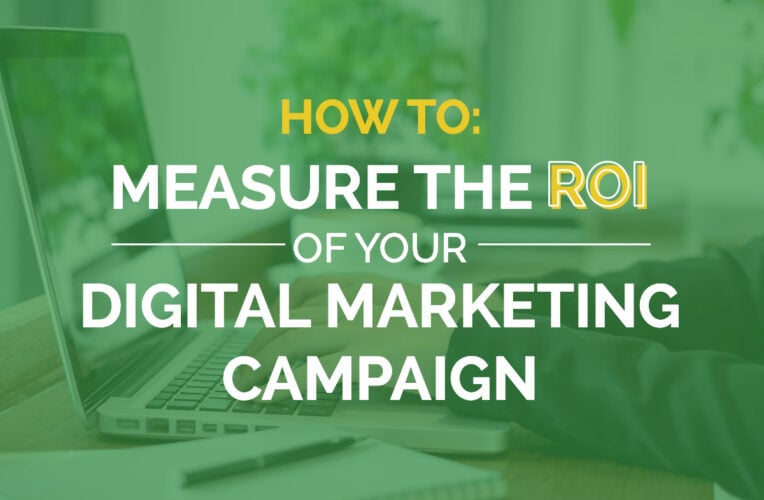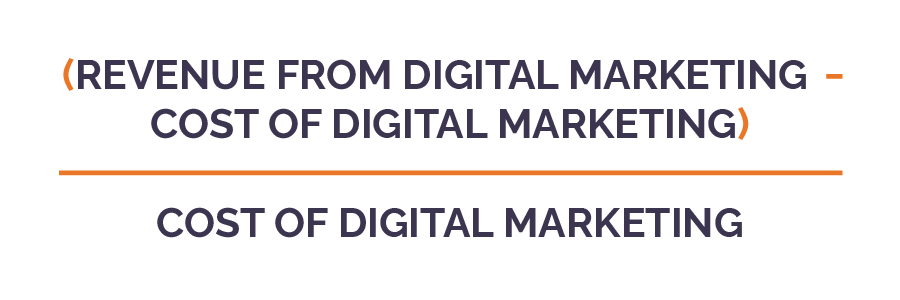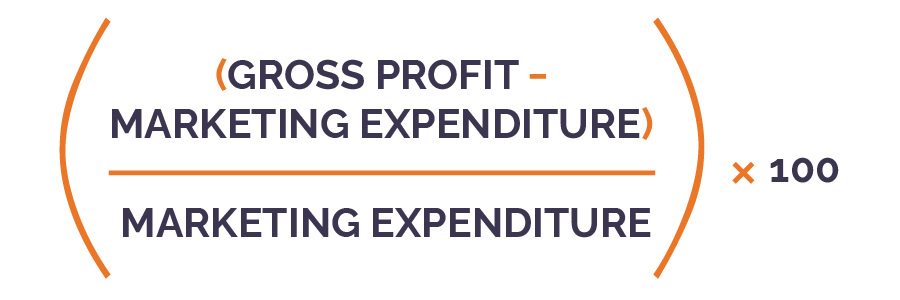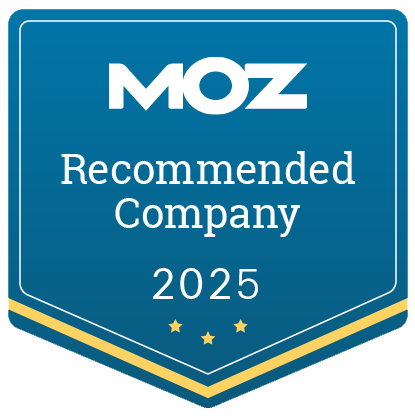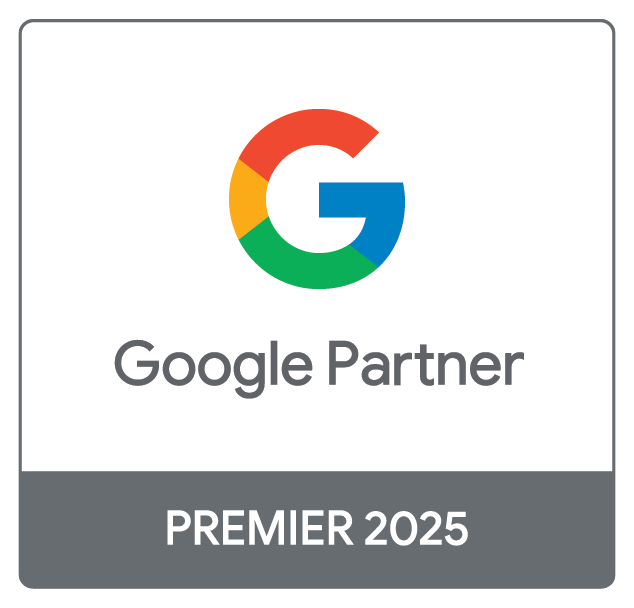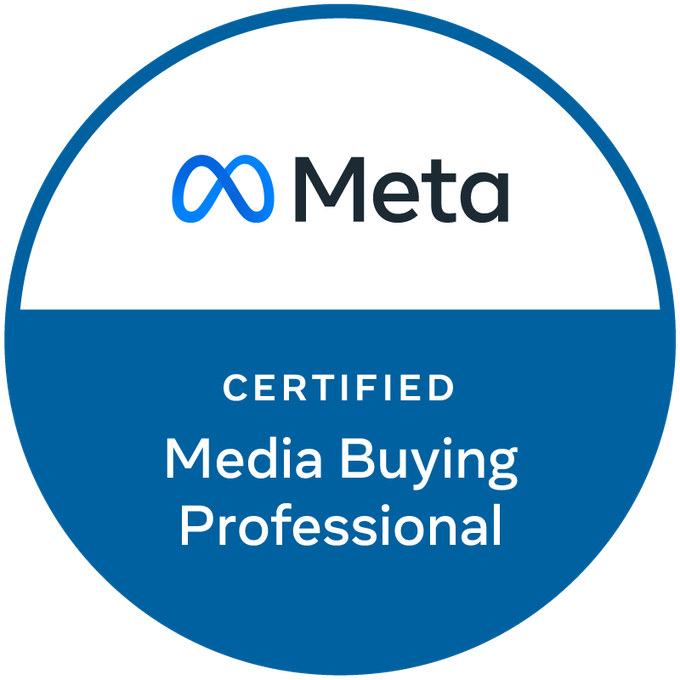Understanding ROI in marketing includes examining the financial implications of your strategies. Such analysis determines the profitability of each dollar spent on marketing efforts, making it an important metric in digital marketing.
Digital marketing ROI also heavily depends on conversion rate optimization. By focusing on improving the conversion rates, you decrease the cost-per-acquisition and subsequently, improve the overall ROI. Technically, it involves tweaking various aspects of your campaign or website to turn visitors into customers.
Knowing how to calculate digital marketing ROI helps optimize your marketing efforts, focusing on the strategies that yield more returns. Let’s get into it!
How to Calculate ROI in Digital Marketing
To put marketing analytics into practice, begin by understanding the key elements in calculating ROI in marketing. First, identify ‘Revenue from Digital Marketing’ – this is the income generated from your digital marketing strategies. Assess different revenue streams such as direct sales, sponsored content, and affiliate marketing, for instance.
Next, pinpoint ‘Cost of Digital Marketing’. Expenses, including labor, advertisement costs, and technology investments, fall into this category.
Use the marketing ROI formula: (Revenue from Digital Marketing – Cost of Digital Marketing) / Cost of Digital Marketing. This equation presents your ROI as a percentage, allowing a quick evaluation of your marketing campaign’s success.
Consider employing conversion rate optimization techniques to improve your marketing ROI. They’ll convert more website visitors into paid customers, later reducing your Cost-per-Acquisition.
Tools like Google Analytics come in handy for rigorous, data-driven assessments of your digital marketing ROI. They’ll shed light on digital metrics like bounce rates and unique visitor data that you’ve previously identified as essential in your ROI calculations. Applying this knowledge, you can optimize your digital marketing strategies and increase returns on your marketing investment.
What is a Good Digital Marketing ROI?
Measure Store Visit ROI with Google Ads
You spend a lot of money on your online marketing, but if you are a brick-and-mortar store, it’s hard to know if these efforts are really paying off. That is, it used to be. Now, thanks to Google Ads, you can get a clear picture of how the money you are spending in online advertising translates to in-store purchases.
Why Store Visit Insights Matters
You can easily measure how many new visitors your website gets in a day, and you can also calculate how many purchases are made in your store, but if you don’t understand how much the two are connected, you could be wasting away your advertising budget in all the wrong places. Just because 95% of purchases take place in stores, that doesn’t mean that’s where you should be spending 95% of your budget.
It’s no secret that people love their smartphones, and it’s also not a mystery that they are searching for you before they even step a foot inside your location. In fact, in 2023, over $84 billion of revenue was generated from local paid ads, accounting for 52% of the year's total. Could you imagine losing that much of your business merely because you didn’t show up on the Google results page when the people nearby you entered your keywords in the search bar? Or better yet, envision how great it would be to increase your sales by 52% by simply including these ads in your marketing repertoire.
How Store Visit Data Is Configured
Clearly, you need to know how your online efforts lead to in-store visits for measuring ROI, but how exactly is this data configured? It’s not like your customers go online and click a button that says, “Yes! I visited this store in person!” (Although that would be handy.) Since it’s not that simple, Google Ads has come up with a tool they call Estimated Total Conversions, or ETC. It’s a relatively new tool that gives you an overall view of how your search advertising is resulting in sales, both online and in-store. They do this by collecting anonymous data from the users who have their location settings enabled on their phones. This information is then averaged and expanded to give you an estimate that provides a complete picture.
Ways Search Ads Can Increase Store Visits
Once you realize just how many people are finding you online before actually visiting your store, you will be able to improve their online experience to further boost your conversion rates. For example:
- It has been shown that 70% of shoppers that use search ads believe it’s important that companies include location information in them. An address is one thing, but PetSmart took it to another level. They amped up their ads to include not only their location, but also a map and directions to the store closest to the searcher—and all the consumer had to do was type a pet product into Google. And guess what? As much as 18% of their ad clicks resulted in a visit to the store.
- In addition to location, 74% of consumers want to know that the product they are looking for is in stock, because their time is valuable and they don’t want to waste it. Instead of making their customers either call the store or visit their website to see inventory levels, Office Depot decided to include this information directly in their search ads. So if you search for a certain type of printer ink, you will instantly be shown the closest Office Depot that has that ink in stock—no time wasted.
When you are a brick-and-mortar store, it’s not enough to track your online activity. You also need to be acutely aware of how this activity is leading to in-store sales. With this important data in your hand, you will be able to tweak your online efforts to give your customers a phone-to-store experience that will make everybody happy.
Strategies to Improve ROI in Digital Marketing
Spot effective digital marketing strategies and channel more resources towards them. Optimize your campaign’s conversion rate by incorporating A/B testing, understanding your audience’s needs, and designing an engaging user interface. Respect the power of solid Marketing Analytics – this aids in scrutinizing your campaign’s performance and making necessary changes. Tools like Google Analytics 4 can serve as your one-stop solution for this.
Tracking the new visitors to your website is one of the easiest ways to see if your digital marketing is on the right track. By reviewing how quickly you are gaining momentum, you can see if there are issues with your PPC targeting or your SEO efforts, or if you are effectively drawing people in. Obviously, the more new visitors you have, the higher your chances of converting them.
Be aware of your campaign’s cost-per-acquisition (CPA). Strive to lower it while improving the quality of leads. This lowers expenses and boosts ROI simultaneously. Know your marketing ROI formula – it’s imperative to calculate your digital marketing ROI periodically. This way, you ensure that you’re getting an optimal return on your investment.
In the digital marketing field, knowing what ROI marketing is holds the key to budget allocation and resource optimization. Remember to use these strategies and you’ll see an improvement in your digital marketing ROI.
Ready to Boost Your Digital Marketing ROI?
You’ve tracked visitor data, monitored bounce rates, and identified qualified leads. You’ve calculated ROI in marketing, and are familiar with the marketing ROI formula. But have you figured out how to increase your digital marketing ROI?
ZGM offers compelling marketing solutions to boost your digital marketing ROI further. By dissecting your data and eliminating inefficiencies, our team fortifies your strategies.
Digital marketing is a long-term game with consistent rewards. Sometimes you will see big changes in your business cash flow right away, and other times it can take a while. However, if you are paying attention to these metrics, it will be clear that you are doing something right and the ROI will be huge. If you are not getting the results you want with your digital marketing efforts, contact Zero Gravity Marketing today. We would love to evaluate your website and let you know where we think we can help.
About the Author

